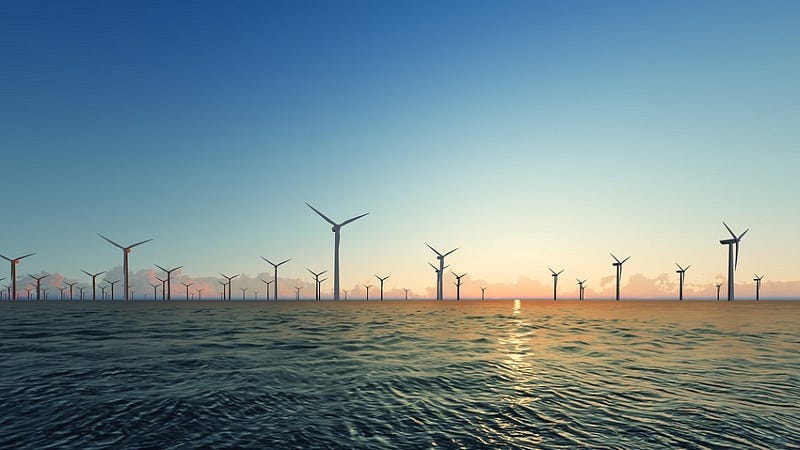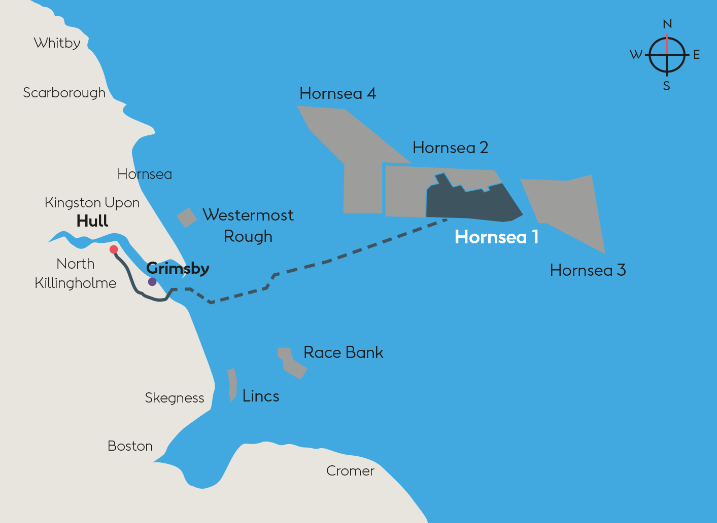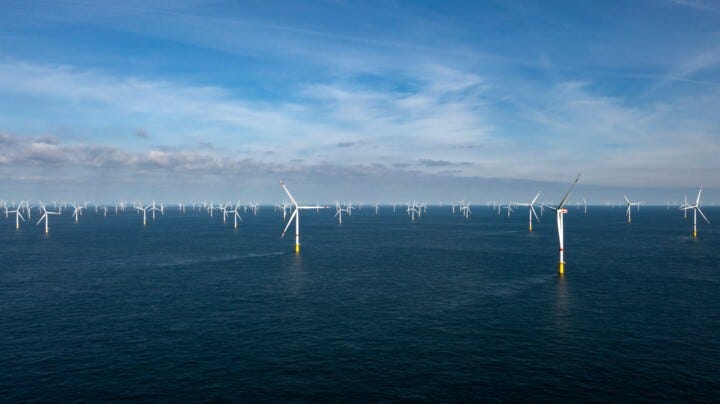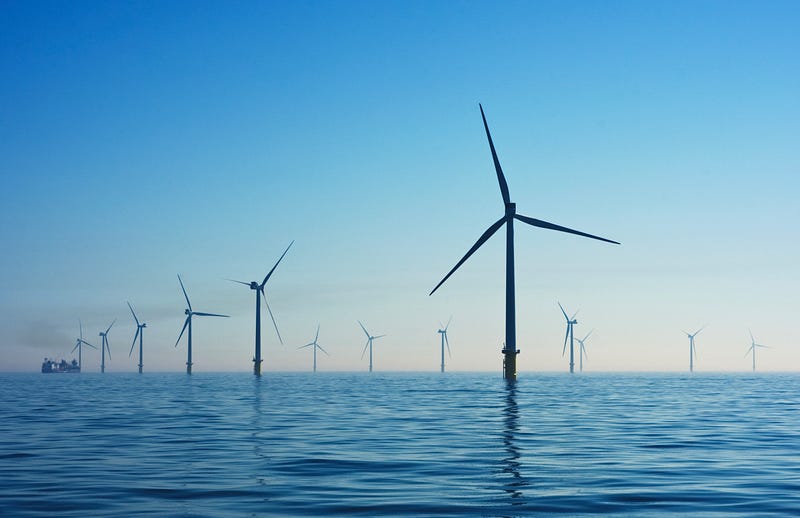Exploring the Hornsea Offshore Wind Park: A Renewable Energy Marvel
Written on
Chapter 1: Overview of the Hornsea Project
The Hornsea Project is a groundbreaking initiative situated in the North Sea, off the coast of the United Kingdom. Remarkably, a single large wind turbine can produce enough electricity in just six months to offset the energy consumed during its manufacturing, installation, and operational lifespan.

Section 1.1: Key Features of the Wind Park
The Hornsea Offshore Wind Park is designed to house 339 wind turbines, each towering at 190 meters, with a total generation capacity of 2604 MW. This impressive setup has the potential to provide energy for 2.5 million homes when functioning at peak efficiency. The wind turbines are strategically positioned approximately 120 kilometers from the British coastline, covering an expansive area of around 869 square kilometers—equivalent to the size of Berlin.

Section 1.2: Investment and Phases of Development
The construction of the Hornsea Wind Park required a substantial investment of approximately £6 billion. The project unfolds over four distinct phases, starting with the initial phase that commenced in January 2018 and became fully operational by February 2019. Following this, the second phase was completed in August 2022, while the third phase is expected to wrap up by 2025. The final phase received approval for construction on July 12, 2023. Upon completion, the entire project will consist of 750 wind turbines, generating over 6,500 MW and capable of powering more than 6 million households across an area exceeding 2,000 square kilometers.

Chapter 2: Benefits of Offshore Wind Energy
The first video discusses the construction and impact of the Dogger Bank Wind Farm, the largest offshore wind farm globally, with insights into its development and significance.
Single wind turbines require an impressive 10,000 tonnes of steel for construction—comparable to the weight of nearly 2,000 elephants. The offshore location of the wind park ensures a consistent supply of strong winds, minimizing conflicts with populated areas and reducing visual disturbances on land. Comprehensive studies have been conducted to guarantee that marine conditions, such as currents and storms, will not jeopardize the safety of the turbines and their underwater infrastructure. Additionally, the project takes into account the potential impacts on marine ecosystems.
The utilization of wind energy presents numerous advantages, primarily in reducing greenhouse gas emissions and leveraging an inexhaustible energy source. From a socio-economic perspective, the Hornsea project generates employment across various sectors, including construction, operation, and maintenance.
Chapter 3: Challenges Facing Wind Energy

The second video highlights the Walney Extension, which is currently the largest operational offshore wind farm in the world, detailing its achievements and functionality.
Despite its many benefits, wind energy does come with some limitations. Notably, wind turbines do not operate continuously; they rely on favorable wind conditions. Consequently, the park includes turbines designed for various wind directions, meaning it can never achieve its maximum estimated output. Furthermore, the high installation costs can deter many nations, particularly given the lengthy time frames required to make such projects profitable. The setup of underwater cables to transmit generated electricity to the shore can also pose logistical and financial challenges.
Conclusion: The Future of Renewable Energy
The Hornsea Wind Park stands as a monumental example of offshore wind energy potential, located in the North Sea. As the largest offshore wind farm in the world, it is projected to host 750 turbines, generating over 6,500 MW and powering more than 6 million homes. Its offshore positioning capitalizes on robust wind currents, while minimizing conflicts with populated areas and preserving land aesthetics. In addition to mitigating greenhouse gas emissions and creating job opportunities, the Hornsea project highlights the vast potential of wind energy as a sustainable resource.
Thank you for engaging with this information! I look forward to sharing more insights in the future.